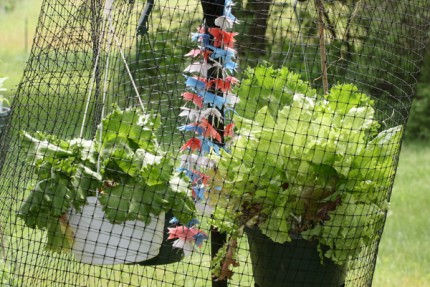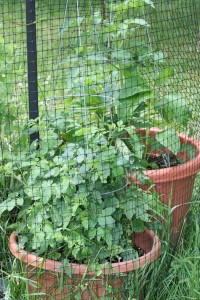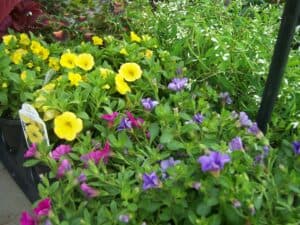
(Chelsea Update would like to thank Jennifer Fairfield, owner of The Garden Mill, for the information in this two part column. The second part will publish tomorrow.)
June. It’s June. Do you know what that means?
It means we have so much to do in the garden and yard. So, are you as behind as I am? I have had many customers coming in the last few days saying they need to get going in their gardens, and boy can I relate.
My garden was far behind where it usually is in early June – until a few days ago, I only had some lettuce, spinach, peas and my beloved garlic (which I planted last fall) in the veggie garden. I would normally have almost everything planted by Memorial Day, with just a few late plantings yet to go in.
The weather was really making it difficult to get going, though. Every time I thought I was going to get some work done in the garden, we got thunderstorms or the temperatures went down so low that I didn’t want to shock the poor plants. But I decided I was going to get as much done as possible early this week. I still have a few things to get in, but I feel much more optimistic that we’ll actually be harvesting produce from the garden this year than I did just a few days ago.
However, my determination to get all the work done in my garden meant a slight delay in getting this month’s newsletter out, so it’s time to get caught up on that, too.
In the veggie garden:
If, like me, you are behind, take advantage of the long days and the perfect temperatures we will be getting in the upcoming days, and get things planted. What should be going in now? Pretty much everything.

Tomatoes, peppers, eggplants, zucchini and cucumbers should go in as started plants – there really isn’t enough time in our short season to start them as seeds directly in the garden and still hope to get production before frost sets in by fall. All of these are plants that need pretty long growing seasons, and we just don’t have that.
Basil, parsley, sage and thyme should also go in as plants at this time, too.
Plant seeds of carrots, bush beans, dill and cilantro every week or two. This way, you can be sure to have a continuous harvest throughout the season. Pole beans can be planted all at once, since they produce all season long.
For anything that needs support, be sure to get stakes or cages in at the time you plant so that you don’t damage roots later. Be sure to mulch them at the time of planting, too. Mulch does a number of great things for your plants – it keeps the soil temperature consistent, suppresses weeds, helps retain moisture, and helps prevent soil-borne diseases from spreading to your plants.
For tomatoes, cucumbers and squash, start a program of spraying with an organic fungicide as soon as you get them in the ground. Michigan gardeners have been having all kinds of problems the last couple of years with blight, powdery mildew and downy mildew, which cannot be cured once they infect your plants. The only way to deal with these problems is through prevention.
Spraying on a weekly basis can help prevent the diseases from getting started, as can making sure to space your plants appropriately. Good airflow through the garden helps things dry out in between rains, which helps keep spores from growing. If you’re not sure what sort of fungicide to use on your plants, come talk to me – I’m happy to make recommendations.
Are you seeing holes in your plant leaves? I’m being plagued by cutworms in my creeping jenny and the slugs are munching on my lettuce. Have I mentioned before how much I dislike those slimy little creatures? They come out at night and chew up my plants and then disappear during the day.
But there are options for controlling them that are actually quite effective and easy. My favorite slug remedy is a product from Espoma called “Earth-Tone Bug and Slug Control.” I just sprinkle a little bit around the plants that have been showing signs of slug damage in the evening, and the damage magically stops.
I don’t ever have to see them, and I don’t have to worry about chemicals that might harm other things that I want in my garden, like bumble bees and other beneficial insects. The cutworms got a spraying of insecticidal soap this morning, which should take care of them. Be sure to identify who is doing the damage before you reach for the insecticide – the right solution depends on the pest.
Weed your garden beds regularly. If you do a little bit every time you are in the garden, it isn’t such a chore.
Be sure to thoroughly water anything you plant right away, and make sure the soil is kept moist where you sow seeds. Newly transplanted plants aren’t as efficient at taking up water as those that have been in the ground for a time, and can get easily dried out.
Seeds also need moisture in order to germinate, so be sure to give the whole garden a good drink whenever we aren’t getting sufficient rain.
(Publisher’s Note: Look for Part two of Let’s Get Gardening in June tomorrow.)



















